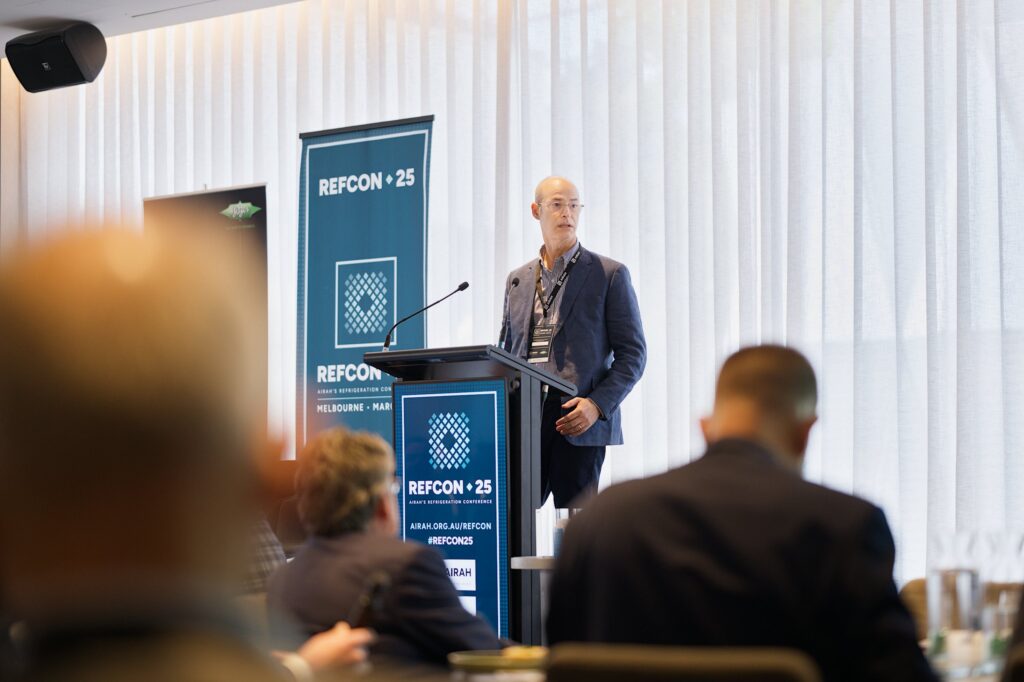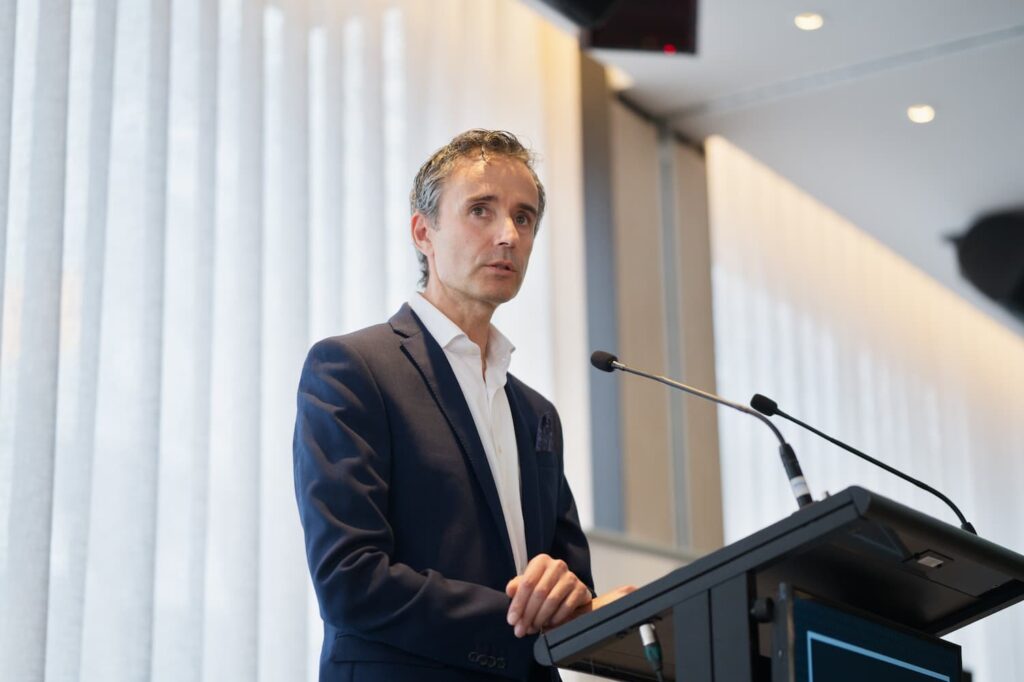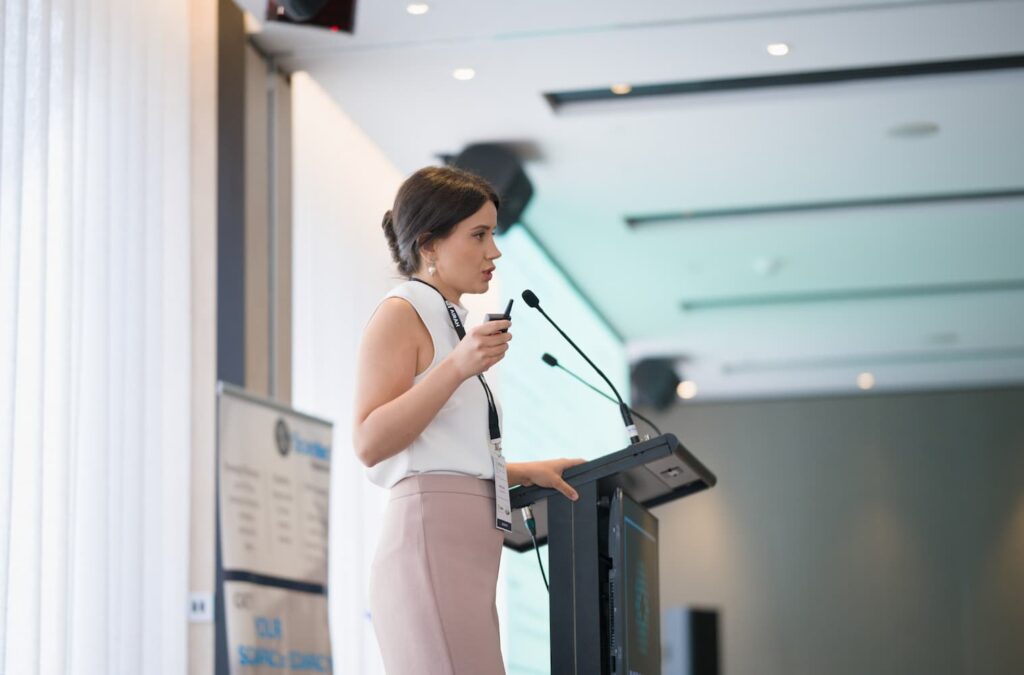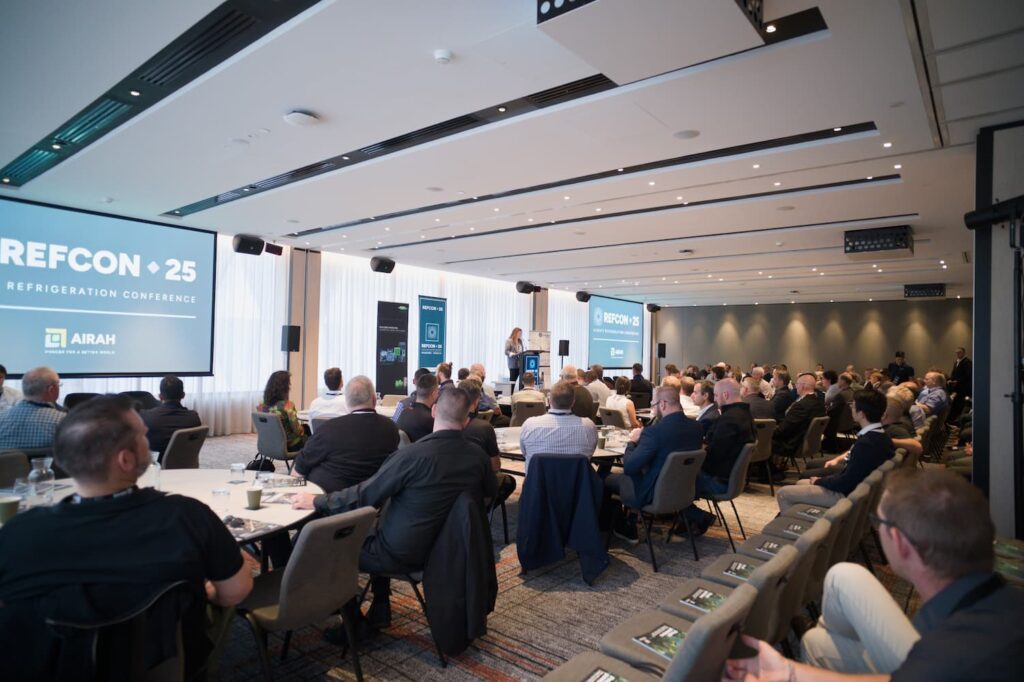AIRAH’s 2025 Refrigeration Conference was billed as the hottest conference for the coolest industry, and it didn’t disappoint.
Held at Rydges Melbourne on March 24, RefCon25 kicked off with a timely reminder from AIRAH President Mikaila Ganado, M.AIRAH, that our industry needs to break down silos, especially the perceived gulf between the refrigeration and HVAC sectors. The conference’s content reflected this, with some presentations that focused heavily on the refrigeration sector and others discussing topics that affect the HVAC&R industry more broadly.
Here are some of the key themes and discussions that emerged during the conference.
News on naturals
The trend towards natural refrigerants, particularly in Europe, was discussed throughout the conference.
The keynote speaker at the event was Alexander Cohr Pachai, AM.AIRAH, who gave a European contractor’s perspective on the refrigerant transition and the trends we may see accelerate in Australia over the coming years.

Pachai’s message was clear: markets in Europe are moving away from fluorinated gases (F-gases) and refrigerants that break down into PFAS. He reiterated that the EU’s latest directive will see HFCs phased out completely by 2050 and used the example of the United Kingdom – where HVAC&R accounts for 79.5% of all F-gas emissions – to illustrate just how important the industry’s contribution is.
Pachai highlighted how carbon dioxide (CO2) and ammonia (NH3) are becoming increasingly popular in European HVAC&R – the former for domestic and small business uses and the latter for large industrial solutions. He also shared his experiences from the recent Chillventa expo in Nuremberg, where propane (R290) was the refrigerant of choice for most exhibitors.
Jan Dusek from ATMOsphere – a global, independent market accelerator for clean cooling and natural refrigerant solutions – echoed the sentiment. His presentation focused on the prevalence of natural refrigerant installations in regions across the world.
Dusek’s statistics reiterated Europe’s status as the global leader in natural refrigerants. He showed that 30% of food retailers in the UK use transcritical CO2 for refrigeration compared to just 8% in Australia and only 1.8% in the USA.
Other presenters warned that for Australia, changes will take time. A panel session in the afternoon chaired by AIRAH’s Refrigerant STG Associate Director Jonathon Hare, M.AIRAH, looked at where we stand in our refrigerant transition. The verdict? Behind where we should be, and in need of bans on species such as R404A. The panel also predicted a facilitating role for synthetic refrigerants as we transition to new solutions.
Refrigeration innovation
RefCon25 featured several technical presentations on innovative commercial and refrigeration solutions that can improve energy efficiency and also integrate with HVAC systems to produce comfort cooling.
Dr Alemu Tiruneh Alemu, M.AIRAH, from Glaciem Cooling Technologies presented on the performance of a CO2 gas cooler/condenser integrated with an indirect evaporative cooler (dewpoint cooler) installed in an Adelaide supermarket. He demonstrated the system’s significant energy savings of 11% on average and 20% during peaks times compared to a chill-boost adiabatic gas cooler, also pointing out that the system remained subcritical on the hottest day of the year. The dewpoint cooler is also effective in more humid conditions, potentially paving the way for CO2 systems in northern regions of Australia.

Fabio Ferrara, Affil.AIRAH, introduced a glycol chiller system equipped with a semi-hermetic compressor, an aluminum condenser with a micro-channel that allows for a reduced-volume refrigerant circuit, an electronic fan with variable speed and an electronic pump with constant Delta T (water in–water out) operation of the glycol. In his presentation, he compared energy consumption between this system and a transcritical CO₂ rack with parallel compressors, identifying situations in which the glycol system performs best.
Dario Ferlin, M.AIRAH, from Woolworths presented on repurposing transcritical CO₂ systems in supermarkets for space heating, focusing not just on how well TCO₂ systems work for such purposes, but on challenges such as cold ambient temperatures and stores with high ceilings. He outlined some solutions Woolworths is employing to improve performance in these conditions, while also reiterating the need to transition to 100% natural refrigerants in the future.

Propane, mo’ gain
Ben Adamson, F.AIRAH, continued this theme, making a compelling case for the more widespread use of A3 refrigerants, especially R290, which he described as the “Goldilocks refrigerant”: just right in all aspects. His presentation focused on safely installing R290 systems to manage flammability risks, taking into account factors such as safe proximity from ignition sources and ventilation requirements for safe dilution of the gas in case of a leak.
According to Adamson, there is a widespread misconception about the danger and difficulty of using R290 as a refrigerant, when in fact the industry has vast experience with safely handling flammable refrigerants such as R32. He pointed out that, as they gain experience with R290, technicians and designers can develop procedures to more easily install these systems in a range of locations and conditions.
Tricky leaks
Jelena Franjić from Expert Group – the organisation that publishes the biannual Cold Hard Facts report on behalf of Refrigerants Australia – spoke about refrigerant leak rates and the significant greenhouse emissions they generate. In 2022 alone, refrigerant leaks were directly responsible for 6.9 megatons of CO2e emissions, with further indirect emissions coming through increased energy consumption from leaky units.

One of the most shocking statistics Franjić presented was the annual leak rate of refrigeration equipment, which is 11% for large chain supermarkets, 15% for independent supermarkets, 15% for industrial refrigeration and cold storage, and even greater for mobile refrigeration.
High maintenance
Another theme underpinning the conference was the importance of maintenance in refrigeration.
Nicholas Lianos, Affil.AIRAH, from Grosvenor Engineering Group demonstrated the value of AI-powered “virtual technicians” in HVAC&R maintenance, emphasising how they can save companies time and money by performing the “boring” tasks and allowing human technicians to focus on more interesting and difficult responsibilities.
One of the more interesting points raised in his presentation was that, in Grosvenor’s experience, the largest category of service calls is actually “no fault”, where the system is working well and only minor tweaks are required to improve occupant comfort. Lianos also highlighted the importance of presenting a value proposition for predictive maintenance to clients, showing them how they can improve performance and save money.
Not your fault, but your problem
Jonathan Fryer, M.AIRAH, delivered an engaging and at times humourous presentation outlining the effects of “interfaces”: systems that interact directly with refrigeration equipment and can wreak havoc on performance. The key message of Fryer’s presentation was that, even if the refrigeration system is working perfectly and being adversely affected by something external, “it’s not your fault, but it’s your problem”.
One example of this is in cold storage facilities, where many doors are built 5m high to accommodate equipment that is used only a small fraction of the time. This causes significant air infiltration and loss of cooling, which according to Fryer can be offset by part-height strip curtains that form a thermal barrier at the top third of the opening.

With 160 attendees, RefCon25 was nearly twice the size of the previous AIRAH Refrigeration Conference, held in 2022.
 Nick Johns-Wickberg
Nick Johns-Wickberg


Leave a Reply